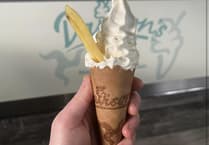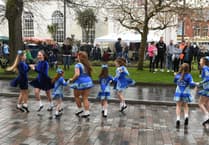There was a rare turnout of all four models of car produced by Peel Engineering in the 1960s at the funeral of George Gelling last Saturday.
George and his early mentor Henry Kissack were both talented motor engineers and it was their skill, combined with the inventive genius of Cyril Cannell, that formed the backbone to the production of the world-famous P50 and Trident microcars.
In his mid-teens George had set to work on project a corner of the Kissack brothers’ workshop in Crosby, where he served his apprenticeship as a mechanic only a short distance from his family home at Woodlea Villas.
Most of his spare time over a three-year period was spent on the car, building the framework for the body by cutting, bending and welding tubular lengths to his own design and shape.
He covered this with an outer shell of three-quarter inch galvanised steel, while other assorted components were made from lightweight aluminium.
The donor engine from a Riley Kestrel was completely stripped and reassembled, and the car eventually completed with various other components from the same donor, including the radiator, headlamps and spoked wheels.
The bodywork was finished in smart British Racing Green paintwork and the Gelling Special made its debut at the fancy dress parade held in connection with Marown War Memorial Field committee’s field day at Crosby. He used it as his everyday car before later selling it.

Peel Engineering Company was based in Mill Road, Peel – alongside the upper harbour – that primarily made fibreglass boats through its subsidiary company West Marine Ltd and fairings for motorcycles (including race machines - known as the ‘Mountain Mile’).
The company built an experimental hovercraft design in 1961, powered by a 500cc Triumph bike engine, and then developed the Peel Manxcar concept vehicle – the Peel P-1000 four-wheeler – and the Peel P50 and Peel Trident three-wheeled microcars, in addition to the Peel Viking Sport and prototype GRP Minis for BMC.
A limited-run Peel Manxkart go-kart was also produced, with some used for many years at Onchan Park. George did some kart racing, as well as competing in car auto tests.
The Peel P50 is in the Guinness Book of World Records as the world’s smallest production car.
A large number of small inshore fishing/leisure boats were made, and George later led the production of several larger motor yachts in a converted RAF hangar at Jurby.
A member of the Renault Owners Club, he played cricket in his youth and crown green bowls at Marown in his later years. He remained interested in classic cars for the rest of his life and his final restoration took him back to his roots with a fully-rebuilt 1934 Riley Kestrel.
George died recently at the age of 89 having spent the last three months in hospital. A founder member and conductor of Crosby & District Silver Band, a large gathering of people attended his funeral at Crosby Methodist Church on Saturday. There was a display of all four Peel Engineering cars outside the Borough Crematorium for aprivate cremation earlier in the day.
He leaves four daughters and seven grandchildren, along with long-time partner Brenda.




